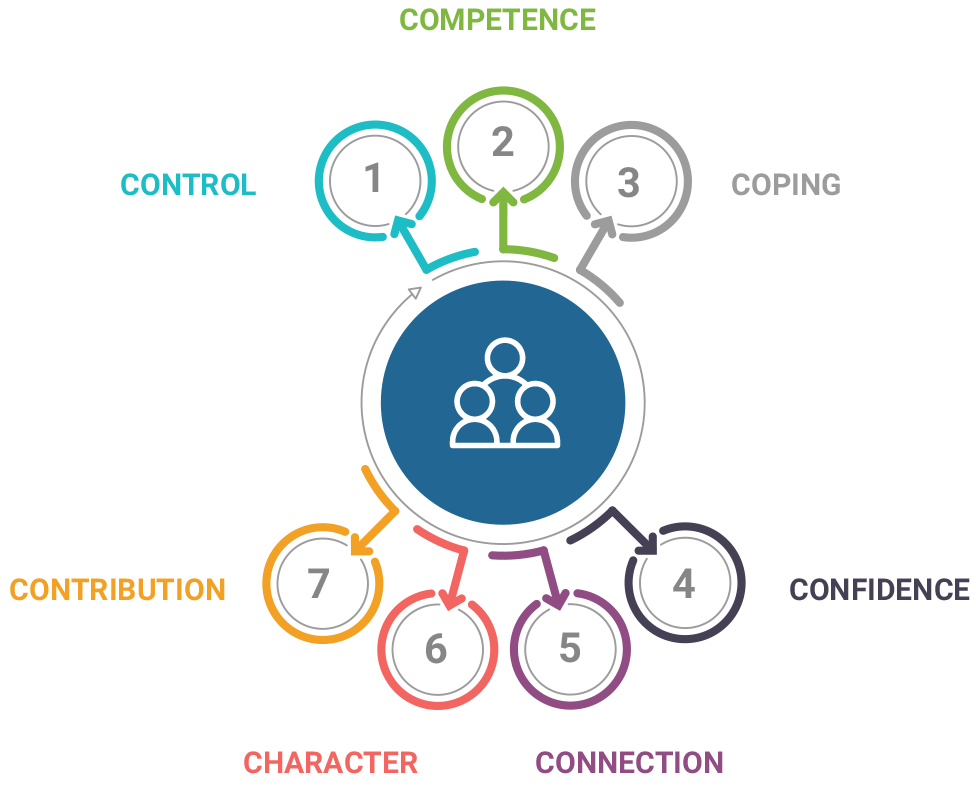The Secrets to Building Resilience in the Workplace
Resilience (noun):
/rəˈzilyəns/
The capacity to quickly recover from difficulties; toughness. (Oxford Languages)
In psychology, resilience refers to our ability to cope with mentally or emotionally challenging situations and swiftly return to our pre-crisis mental equilibrium.
Resiliency is an acquired skill – it’s not something anyone is born with. I would even argue that those who seem born into mental toughness are simply bottling their fears and emotions.
Instead, resiliency is something we build within ourselves as a response to crisis and hardship.
We’ve all had a task we put off for weeks because even thinking about it made us anxious. Once we finally commit to the task, we realize it wasn’t as stressful as we imagined. Next time, we jump into the same task head-on.
As a sailing instructor, I get to witness this process of resilience-building in newbie sailors on the open water.
High winds, choppy waters, and extreme heeling of the boat are frightening experiences for new sailors. Just imagine the fear and panic you would feel yourself.
For me, however, I find such conditions exhilarating, comforting even. That’s because as an experienced instructor, I have the trust, knowledge, and ability needed to manage the situation mentally and emotionally – I have resilience.
Building such resilience in the workplace is key to traversing the inevitable rocky waters every company faces. It’s how you learn from crisis and grow.
The 7 Cs of Resilience in the Workplace
Over the years, I’ve learned that the high seas are the best place for building resilience. Sailing creates a situation where we face the perfect ratio of factors in and out of our control.
Specifically, sailing instills seven critical components of resilience:
- Control
- Competence
- Coping
- Confidence
- Connection
- Character
- Contribution

A large part of resilience comes from understanding what we can and can’t control. For things we can’t control, we must trust the boat’s design, our crew, and God.
For things under our control, we must remain calm to make competent decisions and keep everyone safe. We must stay confident in our ability to cope with strength and dignity.
We need to uphold our own positive character and contribute to the team to the best of our individual abilities. Part of character also requires understanding each crew member’s unique character, contribution, and confidence.
Building Resilience in the Workplace by Weathering the Storm
Resilience isn’t something you can learn from a book or inspirational speeches. Resilience only comes from personal or collective experiences.
It’s so easy to judge people for making the “wrong” decisions in frightening situations. “How could they have done X? I would have done Y if I were in their shoes!”
The truth is that we never know for certain how we would react to a situation until we face it ourselves.
Every year, dozens of sailors decide to put themselves in crisis by signing up for the HOOK Race. Non-sailors would consider the HOOK Race a nightmare: It takes you over the relentless waters of Lake Michigan and Green Bay, through Death’s Door, and around Wisconsin’s treacherous Washington Island and Door Peninsula.
As the name implies, Death’s Door is no joke, even for the most experienced sailors. The hazardous conditions in this part of Green Bay have put hundreds of vessels out of commission – especially sailboats.
Death’s Door unique combination of wind direction, water currents, and rocks makes it the ultimate nightmare or exciting challenge depending on how you look at it.
This year’s HOOK Race was one of the most relentless ones yet. We faced wind speeds of nearly 65mph, torrential rains, thunder, and lightning. Winds tore the masts off seven boats and ripped the ails to shreds on several other boats.
Our boat made it to the end, so our resilience grew.
Every sailor who’s finished HOOK Race knows that once they’ve finished it, they have the resilience to take on anything – especially as a team. They walk away from the experience confident and armed with the coping tools they need.
Resilience and Mental Toughness Keep Us Focused
No one wants to hear this, but your team must face crises and emergencies if you want to build the mental toughness, character, and confidence needed to persevere.
It’s not what you go through but how you handle it and respond.
People who have experienced crises in life and subsequently spent time in therapy will often say they feel prepared to handle anything life throws at them. Although they wouldn’t repeat the crisis if they had the chance, they’ll say the crisis made them who they are today.
Every organization needs to learn mental toughness and resilience across the workplace. On one hand, this is harder than responding to individual crises because you must build resilience in multiple people simultaneously.
On the other hand, everyone knows it’s much easier to cope with a crisis when you have a supportive circle around you.
The Qualities Every Team Needs to Build Resilience in the Workplace
Today’s workplaces don’t prioritize resilience-building. Instead, workplaces run on fear.
Read between the lines a bit and you’ll see fear lurking around every corner at most companies. Fear of economic turbulence. Fear of making a mistake. Fear of being reprimanded, demoted, or fired. Fear of losing benefits. Fear of fellow workers. Fear of leadership.
We already know fear is a horrible motivator in other aspects of life – it drives us to make irrational decisions, react without thinking things through, lash out in anger, and isolate.
Why then do we still allow fear to run our corporate life?
To build resilience in the workplace, teams need an environment free of fear where the following conditions are met:
- Teams should uplift everyone’s strengths instead of focusing on their weaknesses.
- Individuals should feel responsible for the organization’s well-being and share praise during growth.
- People must be held accountable for their actions – both good and bad.
- Employees must feel respected enough to speak up when something’s not right or could be improved.
- Workers must trust that they won’t be punished for certain mistakes – don’t create a culture of tattletales.
These qualities are the secret to a resilient workplace that keeps them focused on the vision. Resilient workplaces have the coping tools and mental toughness to respond to crises swiftly and shrewdly. With this type of support, a crisis goes from devastating to a small blip in operations.
Tackle Uncertainty Head-On with Effective Leadership
Resilience in the workplace and mental toughness comes from the top down. It’s your responsibility as a leader to build a culture of respect, trust, and honesty.
Approach leadership from more of a caretaker role – just like a captain at sea.
It’s the captain’s job to make sure his crew is fed, safe, connected, respected, and inspired. Today’s corporate leaders must prioritize the emotional and mental wellbeing of their team if they want to succeed.
Once a team’s well-being improves, job performance increases and everything falls into place. Then you’ll have a resilient team ready for the next challenge.
Build a Resilient Team on the Open Sea
Don’t wait for an emergency to analyze the resilience of your team. Start building mental toughness and support for the next challenge today on the high seas. Our sailing workshops provide the perfect challenge for teams to communicate and support each other.
Browse the Full Sail Leadership workshop schedule now!

 (c) 2020 Full Sail Leadership Academy
(c) 2020 Full Sail Leadership Academy Photo by niklas_hamann on Unsplash
Photo by niklas_hamann on Unsplash (c) 2019 Full Sail Leadership Academy
(c) 2019 Full Sail Leadership Academy
 (c) 2020 Full Sail Leadership Academy
(c) 2020 Full Sail Leadership Academy
 (c) 2022 Full Sail Leadership Academy
(c) 2022 Full Sail Leadership Academy
Leave a Reply
Want to join the discussion?Feel free to contribute!